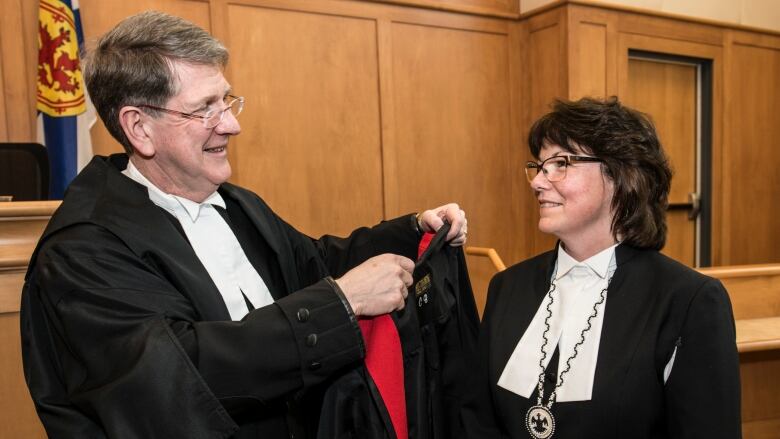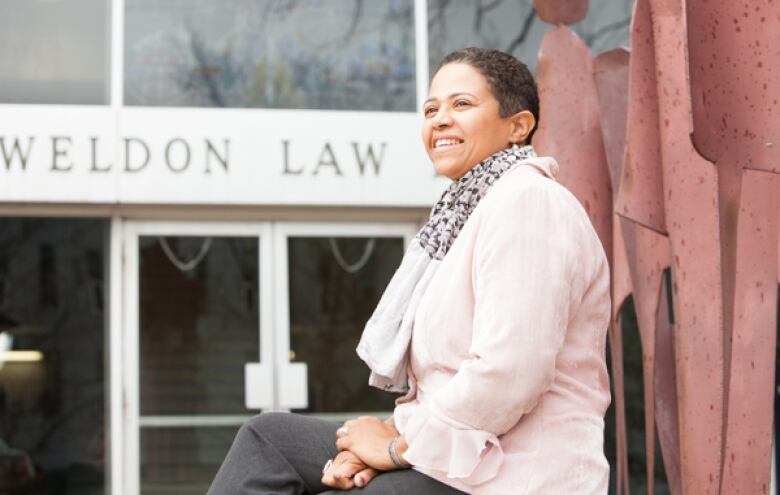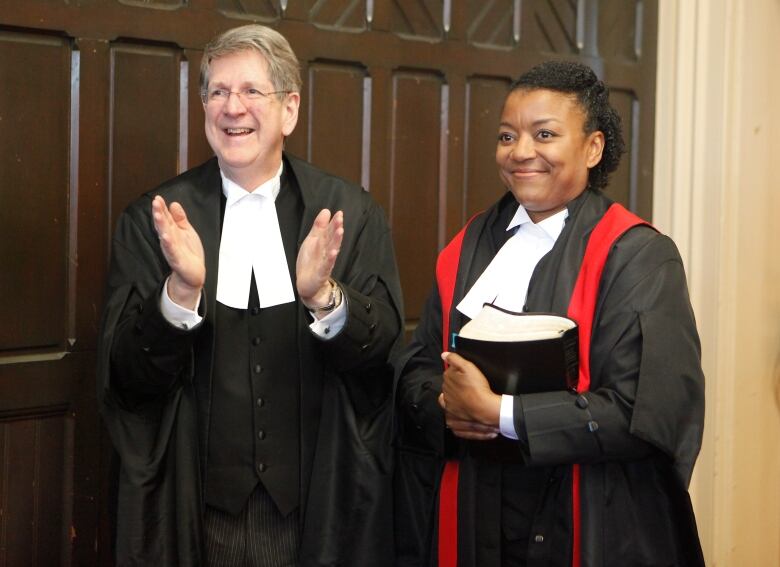'It's a very white bench': Judges to mentor black and Indigenous lawyers
Of the 104 judges across Nova Scotia, only about 10 per cent are not white

The Nova Scotia Judiciary has launched a mentorship program for African-Nova Scotian and Indigenous lawyers who want to become judges.
And already there's much interest. When a call went out earlier this year, more than 50 Nova Scotia judges stepped forward to volunteer as mentors.
Beginning in the fall, three judges will be matched with lawyers. The program will expand to include more eligible lawyers at a later date.
Of the 104 judges across Nova Scotia, only about 10 per cent are not white.Fiveidentify as African-NovaScotian, three as Indigenous, one as Chinese-Canadian and one asSri Lankan-Canadian.
"It's a very white bench if you want to look at it globally and there's much more, I think, has to be done,"Nova Scotia Chief Justice MichaelMacDonald, of the Nova Scotia Court of Appeal, said Tuesday.

He said the judiciary itself has a leadership role to play in making sure all Nova Scotians are fairly treated by the courts.
"Every Canadian, we should see ourselves in our institutions," he said. "I can't imagine a more important institution in which we should see ourselves than the judiciary. We become a richer bench, a richer judiciary the more diverse we become."
MacDonald helped develop the mentorship initiative after meeting with Michelle Williams, a professor and the director of the Indigenous Blacks & Mi'kmaq Initiative at Dalhousie University's Schulich School of Law.
Traditionally excluded from the bench
Having a more diverse bench with a range of experience, perspective and knowledge improves the quality of the judgments or decisions that will be made and boosts public confidence in the overall legal system, Williams said.

"We have a history here in Nova Scotia that includes, of course, unfortunately colonialism, slavery, residential schools, segregation and so on that has really impacted the lives of African-Nova Scotians and Mi'kmaq people," she said.
"And due to that history and its ongoing legacy, we have largely been excluded from legal education and legal profession and consequently from the judiciary as well."
Before the Indigenous Blacks & Mi'kmaq Initiative was established in 1989, very few lawyers from either community graduated from Dalhousie's law school.
"We now have over 180 black and Aboriginal lawyers represented here in Nova Scotia," Williams said.

Report recommends more diversity
Last year, the chief justices and chief judge asked Justice Linda Lee Oland, a Chinese-Canadian judge on the Nova Scotia Court of Appeal, to look into the issue of diversity on the bench.
After meeting with judges, lawyers, academics and others, Oland prepared a report and came up with 11 recommendationsthatidentified ways the judiciary could encourage diversity.
Oland's recommendations include:
- That the judges identify opportunities in their clerkship programs for black and Indigenous students.
- If appropriate, that the chief justices and chief judge encourage the provincial and federal ministers of justice and other nominating bodies to include visible minorities in their appointments to committees.
- That the judges add a cultural competency training to their conferences.
- That the chief justices and chief judge continue to promote the inclusion of visible minorities on the bench and welcome and support them following their appointments.
To date, MacDonald said, all but one of the recommendations are either in the works or have been implemented.
He said one thing he doesn't believe there should be arequotas:"We're very blessed in Nova Scotia and also in Canada to have judges who are completely, have been appointed on merit," he said.
This year, three judges of African descent Rickcola Brinton, Sam Moreau and Ronda van der Hoek and Nova Scotia's first Mi'kmaq female judge, Catherine Benton, were appointed to the provincial and family courts.












_(720p).jpg)


 OFFICIAL HD MUSIC VIDEO.jpg)
.jpg)



























































































